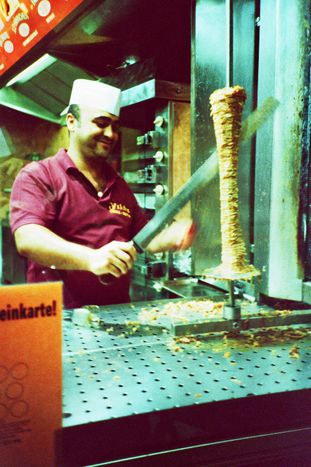
A brief history: döner kebab, fair ambassador to Turkey?
Published on
One of the most popular late night snacks in Europe is the flag bearer of Turkish cuisine outside of Turkey. Is this a source of pride or sorrow for the Turks? Plus, a recipe for green beans in olive oil
It’s Friday night, or actually, Saturday morning. After six pints of lager and a few shots of Aftershock, your stomach is begging for an emergency pit stop at the nearest döner joint. Hands shaking, you dig into your döner kebab topped with pickles and a garlicky yogurt concoction, and promise to pray to the Döner God before passing out on your bed, shoes still on.
What really is Turkish cuisine?
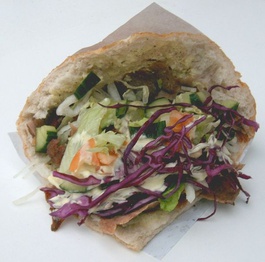 There is no denying that this famed meat sandwich combines some of the essentials of Turkish eating habits (meat, bread, yogurt, garlic and pickles). But did you know that it was created by Turkish immigrant Mahmut Aygün in Berlin in 1971? This bestseller is a far cry from the rich and diverse cuisine that modern day Turkey represents. There is a Turkish word that pretty much sums up the raison-d’être of Turkish cooking: keyif. It roughly translates into 'pleasure of life'; imagine sitting on a sunny terrace in a mid-June afternoon. You’re sipping on a light beer, munching some home-style potato chips and catching up with your best friend. That’s keyif, and that’s what Turkish cuisine tries to recreate over and over again. A delicate mixture of Mediterranean and Middle Eastern tastes with a pronounced Central Asian inheritance, Turkish food differs from region to region and offers a diversity of options to the gastronomically keen.
There is no denying that this famed meat sandwich combines some of the essentials of Turkish eating habits (meat, bread, yogurt, garlic and pickles). But did you know that it was created by Turkish immigrant Mahmut Aygün in Berlin in 1971? This bestseller is a far cry from the rich and diverse cuisine that modern day Turkey represents. There is a Turkish word that pretty much sums up the raison-d’être of Turkish cooking: keyif. It roughly translates into 'pleasure of life'; imagine sitting on a sunny terrace in a mid-June afternoon. You’re sipping on a light beer, munching some home-style potato chips and catching up with your best friend. That’s keyif, and that’s what Turkish cuisine tries to recreate over and over again. A delicate mixture of Mediterranean and Middle Eastern tastes with a pronounced Central Asian inheritance, Turkish food differs from region to region and offers a diversity of options to the gastronomically keen.
For example, in my Istanbul family, a typical dinner table consists of a protein (mostly red meat cooked together with vegetables), a starch (usually rice), one or two vegetarian dishes (either vegetables or legumes cooked in olive oil), a green salad and bread (like a white loaf of baguette) - loads of it! Dessert can be either milk (rice pudding) or pastry (baklava) based, with seasonal fresh fruits served as an endnote. And that’s just my family.
Back to the döner
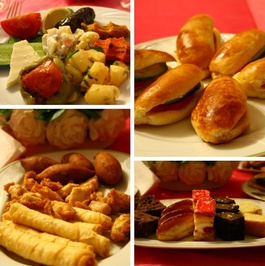 Go to eastern Turkey and meat will weigh more heavily on the table. In Turkish, the term kebab refers to a variety of grilled, roasted or stewed meat dishes, sometimes cooked with vegetables. In fact, being of Central Asian origin, Turks do love their meat, and especially lamb (or mutton). It was not until the late 11th century that they settled in the fertile lands of Asia Minor and started cooking more with vegetables (from A la table du Grand Turc by Stéphane Yerasimos, 2001). In the western regions (Aegean and Marmara), anything that contains olive oil is king. Turks inherited their Mediterranean style diet from the indigenous inhabitants of the western edge of Asia Minor, namely the Greeks and Romans. The group of dishes called zeytinyağlılar constitutes an everyday staple. These are vegetables cooked in olive oil. They are served cold, especially refreshing in hot summer days. It's a great alternative to those who have had enough of eating steamed greens. The onions and tomatoes at the base of most of these dishes give the veggies a more palatable taste. Many vegetables and legumes are cooked in this manner, from fava beans to eggplants.
Go to eastern Turkey and meat will weigh more heavily on the table. In Turkish, the term kebab refers to a variety of grilled, roasted or stewed meat dishes, sometimes cooked with vegetables. In fact, being of Central Asian origin, Turks do love their meat, and especially lamb (or mutton). It was not until the late 11th century that they settled in the fertile lands of Asia Minor and started cooking more with vegetables (from A la table du Grand Turc by Stéphane Yerasimos, 2001). In the western regions (Aegean and Marmara), anything that contains olive oil is king. Turks inherited their Mediterranean style diet from the indigenous inhabitants of the western edge of Asia Minor, namely the Greeks and Romans. The group of dishes called zeytinyağlılar constitutes an everyday staple. These are vegetables cooked in olive oil. They are served cold, especially refreshing in hot summer days. It's a great alternative to those who have had enough of eating steamed greens. The onions and tomatoes at the base of most of these dishes give the veggies a more palatable taste. Many vegetables and legumes are cooked in this manner, from fava beans to eggplants.
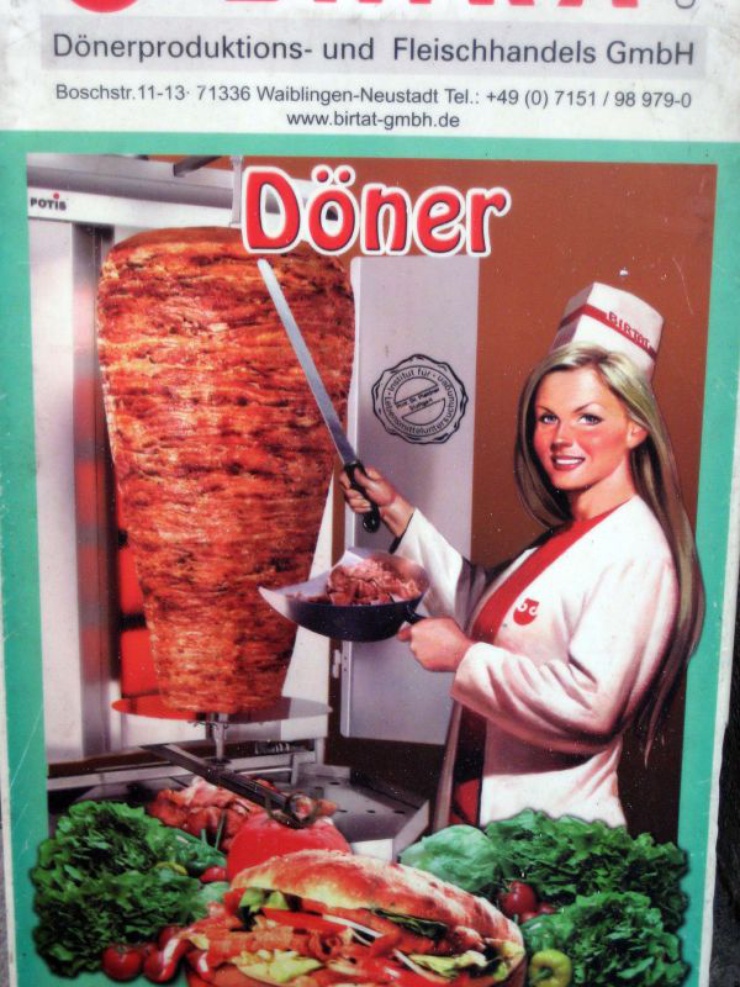
If you were to visit a meyhane (Turkish style pub) in Istanbul, you will not only encounter the famed mezes (appetizers to accompany alcohol) but also all sorts of grilled meat, fish and the most sought after delicacies: a variety of offal, from poached mutton brain dressed with olive oil and lemon juice to braised veal liver served with chopped red onions and parsley. Thus, the Turkish palate goes beyond the late night misadventures with döner kebab. It is a little unfair that an industrially prepared slab of meat served with all sorts of absurd sauces (I have seen Hawaiian) should symbolise the historically and geographically rich eating culture of a country of over 70 million inhabitants. Also, let’s be honest: does döner kebab really tickle your keyif, or is just more heartburn?
Zeytinyağlı fasulye (Green beans in olive oil, serves 4 as a side)
Ingredients:
500 gr green beans, edges cut off (In Turkey mostly runner beans are use for this dish, but they are harder to find abroad. If you are using runner beans you should also take off the strings otherwise they will get stuck in your throat)
1 medium size onion, diced
4 ripe tomatoes, diced
1 carrot (optional), diced
3 tablespoons olive oil
1 teaspoon salt
½ cup hot water
Italian parsley, roughly chopped, to decorate
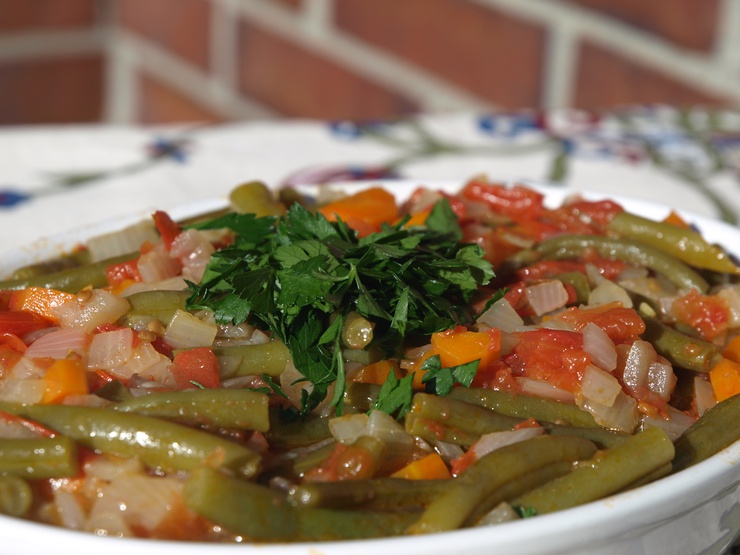
Preparation:
Heat two tablespoons of olive oil in a heavy-based medium pot
Add the diced onions and cook until they turn yellowish (do not brown them)
Add the carrots, if using, and cook for a few minutes. Add tomatoes and green beans
Pour in the hot water and add the salt
Lower heat to medium-low and cook, with the lid closed, until the beans are tender (but not mushy)
Turn off the heat and pour your beans in a ceramic or glass serving dish
Wait until they cool off completely and place the dish in the fridge, covered. Chill for an hour or so. Once chilled, drizzle the remaining tablespoon of olive oil on the beans and decorate with parsley. Enjoy!
Read the author's official blog, thehungryturk.com
Images: Berlin-style kebab © Sarazyn/ Wikimedia; mezes in Turkey © Duru.../rukiyetasci.com/ Flickr; woman serving kebab in a German poster in Grenoble ©y Fanny B./ myspace.com/elisehulm; green beans in olive oil dish ©Suna Ekmekcioglu



